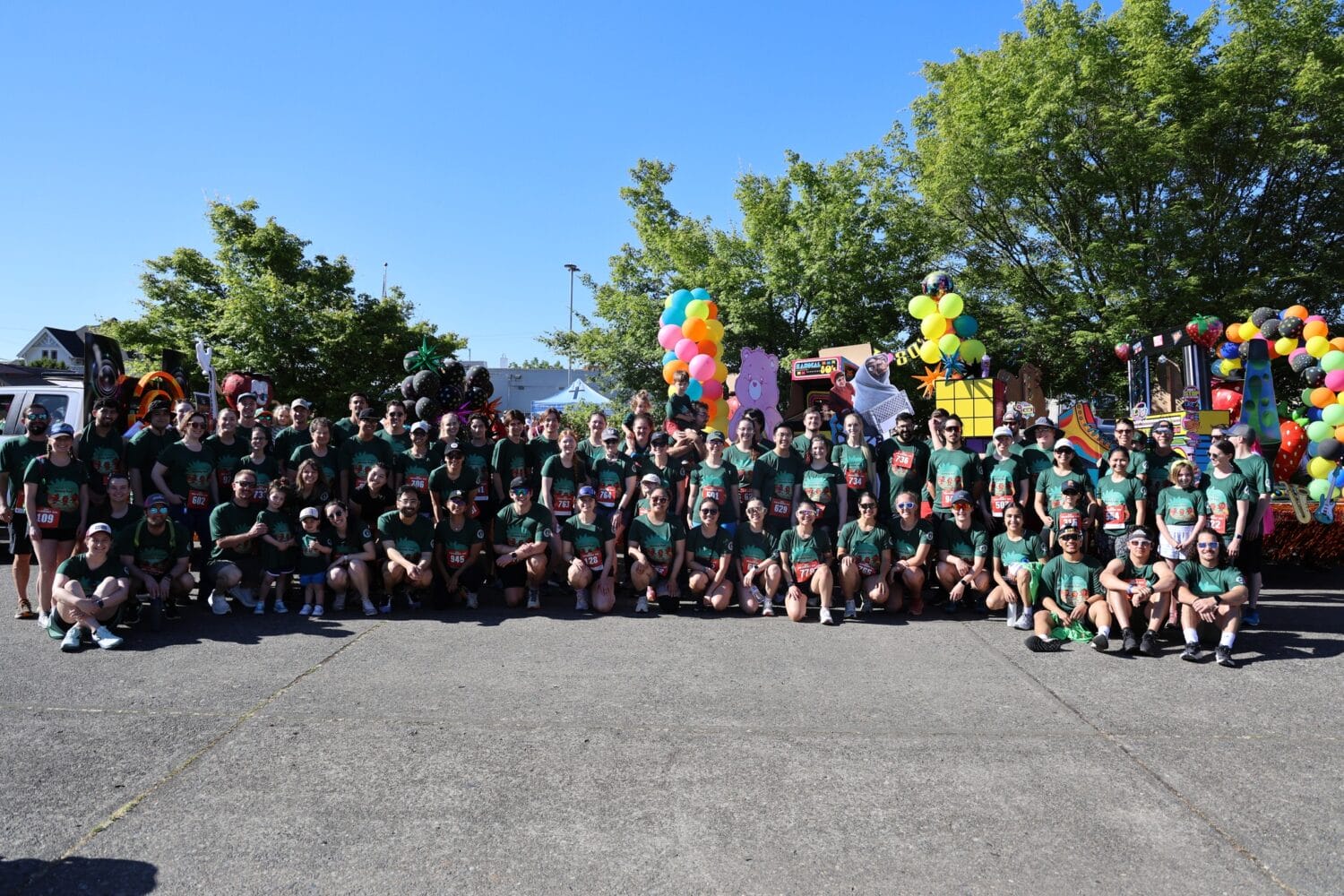COMP-Northwest addresses need for greater emphasis on physical activity
A recent study by Oregon State University shows that a majority of U.S. medical schools do not offer any courses on physical activity, and when the courses are offered, they are rarely required.
This could leave doctors ill-prepared to assist patients who could benefit from exercise, said Brad Cardinal, a professor of exercise and sports science in OSU’s College of Public Health and Human Services, and the study’s lead author.
The College of Osteopathic Medicine of the Pacific – Northwest in Lebanon, Oregon is addressing this issue on several fronts by providing students more opportunities to stay active, creating the Healthy Living and Wellness Initiative and the Lifestyle Medicine Track, and teaching the community about eating and living healthier.
COMP-Northwest faculty and staff emphasize health and well-being when students are first introduced to the campus, said second-year COMP-Northwest student Ginger Cupit, president of the Class of 2017.
“During Welcome Week, they taught us how to be a healthy student – to get enough sleep, eat healthy, and make choices that would bring out our best for medical school,” she said. “They challenged us to consider our health and wellness.”
Cupit said she sits in lecture all day and is also studying for board exams, so it seems as if she only has time to study and eat. Her nutrition and workout schedule completely changed when she entered medical school.
So Cupit brainstormed with her classmates about ways to become more active. She secured a donation of a basketball hoop from Wal-Mart, and installed it in the COMP-Northwest parking lot.
The Human Solution, based in Austin, Texas, donated three treadmill desks valued at more than $6,100 for use by students and faculty. The treadmill desks offer an opportunity for medical students to stay active while continuing to balance their rigorous course load.
The three treadmill desks will be stationed across the COMP-Northwest campus, and students, faculty and staff will be able to sign up for hour-long time slots. A research team plans to collect data on treadmill desk use for a study on physical activity, said COMP-Northwest Chief Wellness Officer Robyn Dreibelbis, DO.
The treadmill donations will be assembled later this month and will help change the physical environment at COMP-Northwest, she said.
“This will be the first of many changes on the Pomona, California and Lebanon campuses that show our students that we are serious about not only their health, but also teaching them how to help their patients,” Dreibelbis said.
U.S. physical activity guidelines suggest adults should get 150 minutes per week of moderate-intensity physical activity. The treadmills will not replace that level of exercise. Rather, they address another issue faced by medical students and office-dwellers alike: Even if you get in those 150 minutes of exercise, if you spend the rest of the week sitting down, you’re considered physically inactive, Dreibelbis said.
“Physical inactivity puts us at huge risk for chronic disease, regardless of whether we meet the exercise requirement,” she said. “Treadmill desks are going to allow for the ability to be active while listening to lectures in real time.”
Our bodies were made to move, yet with the industrialization of our country over the past century, we have engineered physical activity out of our daily lives in an attempt to increase convenience, Dreibelbis said. One of the guiding principles of COMP is a focus on the lifestyle components of health.
“I heard something recently at a conference that stuck with me: Our health is in large part the result of what we choose to do with our forks, our fingers, and our feet. That means that what we eat, whether or not we smoke, and how much exercise, as well as the non-exercise physical activity, we do largely results in how healthy we are as individuals,” she said. “Our desire is to change the culture and the physical environment at COMP-Northwest so that the students understand that we value their own health as much as the health of their future patients. We do this by giving them the opportunity to be active during their long days in our building, so that they will be better equipped to share that information with their future patients through their own personal experience.”
Based on published research, 40 percent of U.S. primary care doctors and 36 percent of U.S. medical students do not meet the current physical activity guidelines, and that physically inactive doctors are less likely to provide exercise counseling to patients, Dreibelbis said.
“So, in a way, by encouraging our medical students to use these treadmill desks while in medical school, we are teaching them to counsel their future patients to do the same,” she said. “Having access to these treadmill desks will allow our students to not only talk the talk, but also walk the walk of exercise and physical activity as they move into their careers beyond COMP-Northwest. I often say that you have to practice like you are going to play, and this change in both culture and physical environment at COMP-Northwest is allowing for that to happen.”
COMP-Northwest students are finding simple ways of incorporating wellness into their daily lives, which will help them interact with patients, Cupit said.
“We’re not asking to completely flip people’s lives around. There are simple paths to make people’s lives better,” she said. “It’s one thing for me to tell a patient to eat healthy, but if we don’t know how to do that ourselves, how can we expect patients to do that?
“When we’re happy and healthy, hopefully we’re treating our patients better,” Cupit said. “When we’re eating right and exercising, hopefully that will give us energy to really focus on our patients.”



